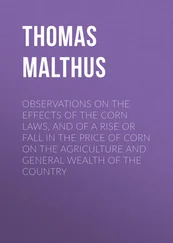Hitler’s Terror Weapons
The Price of Vengeance
Roy Irons

Dedication Dedication Foreword by Richard Overy Preface Part I. Development and Dreams 1. The Seeds of Vengeance 2. The Weapons of Vengeance Part II. Raids and Revenge 3. The Renewal of War 4. Promise from Peenmuende Part III. Fear and Intelligence 5. The Doom of London 6. Terror, Strategy and a Poison Cloud Part IV. Impact and Reality 7. Countdown 8. The Robot Bombardment 9. Attack from Airless Space – The final Preparations 10. The Rocket’s Red Glare 11. Terror and Morale 12. Belgium the Brave 13. Shooting the Rocket Down Part V. Evaluation and Hindsight 14. Hitler’s War and the Terror Weapons 15. Germany’s War and the Terror Weapons 16. Conclusion Epilogue: ‘… but a whimper’ Appendices 1. The Paths of Vengeance 2. ‘The Hubertus Train, the live whip of the German Armament Industry’ 3. Statistics 4. Four Allied Analyses of the flying Bomb Selected Bibliography Index Copyright About the Publisher
This book is dedicated toErica Roe IronsandRebecca Ann Irons
Contents
Cover
Title Page Hitler’s Terror Weapons The Price of Vengeance Roy Irons
Dedication Dedication Dedication Foreword by Richard Overy Preface Part I. Development and Dreams 1. The Seeds of Vengeance 2. The Weapons of Vengeance Part II. Raids and Revenge 3. The Renewal of War 4. Promise from Peenmuende Part III. Fear and Intelligence 5. The Doom of London 6. Terror, Strategy and a Poison Cloud Part IV. Impact and Reality 7. Countdown 8. The Robot Bombardment 9. Attack from Airless Space – The final Preparations 10. The Rocket’s Red Glare 11. Terror and Morale 12. Belgium the Brave 13. Shooting the Rocket Down Part V. Evaluation and Hindsight 14. Hitler’s War and the Terror Weapons 15. Germany’s War and the Terror Weapons 16. Conclusion Epilogue: ‘… but a whimper’ Appendices 1. The Paths of Vengeance 2. ‘The Hubertus Train, the live whip of the German Armament Industry’ 3. Statistics 4. Four Allied Analyses of the flying Bomb Selected Bibliography Index Copyright About the Publisher This book is dedicated toErica Roe IronsandRebecca Ann Irons
Foreword by Richard Overy
Preface
Part I. Development and Dreams
1. The Seeds of Vengeance
2. The Weapons of Vengeance
Part II. Raids and Revenge
3. The Renewal of War
4. Promise from Peenmuende
Part III. Fear and Intelligence
5. The Doom of London
6. Terror, Strategy and a Poison Cloud
Part IV. Impact and Reality
7. Countdown
8. The Robot Bombardment
9. Attack from Airless Space – The final Preparations
10. The Rocket’s Red Glare
11. Terror and Morale
12. Belgium the Brave
13. Shooting the Rocket Down
Part V. Evaluation and Hindsight
14. Hitler’s War and the Terror Weapons
15. Germany’s War and the Terror Weapons
16. Conclusion
Epilogue: ‘… but a whimper’
Appendices
1. The Paths of Vengeance
2. ‘The Hubertus Train, the live whip of the German Armament Industry’
3. Statistics
4. Four Allied Analyses of the flying Bomb
Selected Bibliography
Index
Copyright
About the Publisher
Foreword
On June 16 1944 Joseph Goebbel’s Propaganda Ministry sent out a directive to the German press announcing that the first attacks on London with weapons ‘of a new sort’ would take place that night. It was to be the ‘event of the day’ for the following morning’s front pages. Eight days later the press was told that the weapon would be called the ‘V 1’, the ‘V standing for Vergeltung or vengeance. Thus did the German public learn of what soon became the V-weapons campaign.
Ever since the onset of heavy bombing on German cities in 1942 Adolf Hitler had sought some form of terrible retaliation that would force the British and Americans to stop. In the winter of 1943–4 the German Air Force launched the so-called ‘Baby Blitz’ on London, but there were too few bomber aircraft to achieve anything of significance against well-organised air and passive defences. Instead Hitler threw his dictatorial weight behind the development of long-range missiles, first the V-1 flying bomb, then the V-2 rocket. Plans were developed to produce them in vast numbers using simple work methods and slave labour supplied by Heinrich Himmler’s concentration camps. Some evidence suggests that Himmler was planning to fill the warheads with radioactive waste, but this came to nothing. Instead each missile became an expensive way of transporting modest quantities of conventional high explosives.
The story of the German V-weapons has two sides to it. The British were aware that German scientists were pioneering weapons at the cutting edge of modern military technology. They imagined the worst, and prepared for a new apocalypse, just as they had done in the 1930s in anticipation of German conventional bombing. Until now little has been written about just what the British did to understand, anticipate and combat the new weapons. The account that follows explores not only the warped mindset that drove Hitler to gamble a large proportion of Germany’s overstretched war effort on untested technology, but it presents in fascinating detail the twists and turns of British policy in the full glare of the missile threat. Roy Irons gives us the first round in what became the principal feature of post-war superpower confrontation – missile threat and anti-missile defence.
It is tempting to suggest on the basis of this candid account – exaggerated fears on the one side and expectations on the other – that later missile wars might have been different from the terrifying scenarios of nuclear destruction that fuelled the arms race of the 1950s and 1960s. Without the German experiments of the wartime years the post-war missile race would have taken longer anyway. Poor though the strategic gains were for Germany from the V-weapons, the long-run technical gains for the wartime Allies were substantial. It is a peculiar irony that German scientists and engineers working for Hitler ended up supplying the West with the technical means to defend democracy against Communism.
Vengeance, as Roy Irons makes clear, was Hitler’s stock-in-trade. The thirst for vengeance in 1919 after German defeat was savagely assuaged in the extermination camps of the Second World War and the search for wonder-weapons of awesome destructive power. What follows is the history of two very different systems fighting very different wars. The V-weapons are in some sense an emblem of Hitler’s dictatorship; the British response was the product of a democratic system at war – long discussions in committee, many muddled arguments, but enough sensible judgement to get through. In Roy Irons’ sympathetic and original account the V-weapons campaign becomes not simply a test of technical ingenuity, but a revealing window on the way two very different adversaries made war.
Richard Overy
King’s College
London
Preface
My first acknowledgements of debt in writing this book are to my Mother and my Grandmother. The former woke my twin brother and me in the middle of the night to hear the newsflash “Hitler is dead”, and took us to see the ‘V weapons arrayed in Trafalgar Square in 1946. The latter, when a ‘doodlebug’ seemed to stop exactly overhead (as they always seemed to do) would quietly and contemptuously smile at Hitler’s foolish attempt to steal victory from her beloved England. What child could fail to be impressed by this calm assurance amid the giant clash of little understood arms over London, or by hearing ‘live’ news of the death of the dreaded tyrant, and seeing the captured weapons themselves, still sinister and impressive amid the triumph of their victims?
Читать дальше







![Traudl Junge - Hitler's Last Secretary - A Firsthand Account of Life with Hitler [aka Until the Final Hour]](/books/416681/traudl-junge-hitler-s-last-secretary-a-firsthand-thumb.webp)





